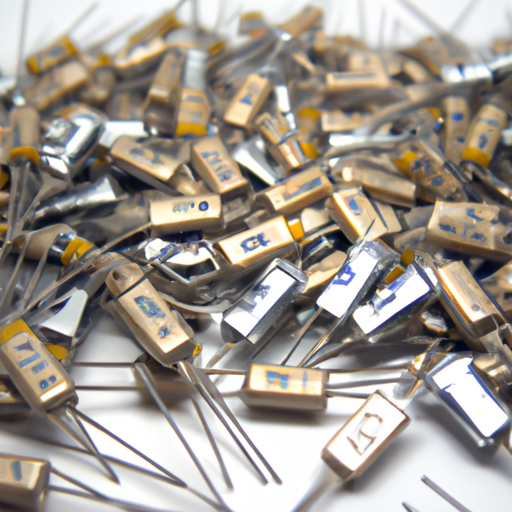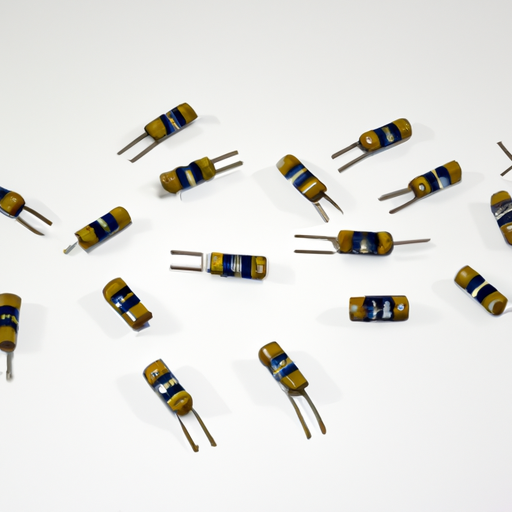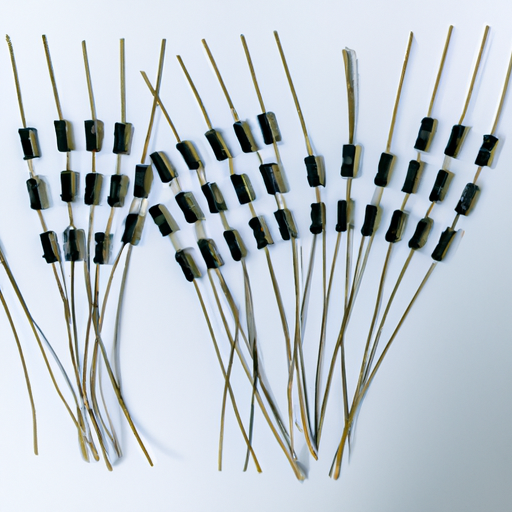What is the price of popular standard resistor models in stock?
What is the Price of Popular Standard Resistor Models in Stock?
I. Introduction
Resistors are fundamental components in electronic circuits, serving the crucial role of limiting current flow and dividing voltages. They are essential for controlling the behavior of electronic devices, from simple circuits to complex systems. With a variety of resistor types available, understanding their pricing is vital for engineers, hobbyists, and manufacturers alike. This article aims to provide insights into the pricing of popular standard resistor models currently in stock, helping readers make informed purchasing decisions.
II. Understanding Resistor Types
A. Fixed Resistors
Fixed resistors are the most common type, providing a constant resistance value. They are categorized into several types based on their material composition:
1. **Carbon Film Resistors**: Made from a thin layer of carbon, these resistors are popular due to their low cost and decent performance. They are suitable for general-purpose applications.
2. **Metal Film Resistors**: These resistors offer better precision and stability than carbon film resistors. They are often used in applications requiring higher accuracy.
3. **Wirewound Resistors**: Constructed by winding a metal wire around a ceramic or fiberglass core, wirewound resistors can handle higher power ratings and are used in applications where heat dissipation is critical.
B. Variable Resistors
Variable resistors allow for adjustable resistance values, making them versatile components in electronic circuits.
1. **Potentiometers**: Commonly used for volume control in audio devices, potentiometers can vary resistance based on the position of a wiper.
2. **Rheostats**: Similar to potentiometers but designed to handle higher currents, rheostats are often used in applications like light dimmers.
C. Specialty Resistors
Specialty resistors serve specific functions in electronic circuits.
1. **Thermistors**: Temperature-sensitive resistors that change resistance with temperature variations, thermistors are widely used in temperature sensing applications.
2. **Photoresistors**: Also known as LDRs (Light Dependent Resistors), these components change resistance based on light exposure, making them ideal for light-sensing applications.
III. Factors Influencing Resistor Prices
Several factors influence the pricing of resistors, making it essential to understand these elements when shopping for components.
A. Material Composition
The material used in resistor construction significantly impacts pricing. Carbon film resistors are generally cheaper than metal film resistors due to the latter's superior performance and precision. Wirewound resistors, while more expensive, are necessary for high-power applications.
B. Tolerance and Precision
Tolerance refers to the allowable deviation from the specified resistance value. Resistors with tighter tolerances (e.g., 1%) are typically more expensive than those with looser tolerances (e.g., 5%). Precision resistors are crucial in applications where accuracy is paramount.
C. Power Rating
The power rating, measured in watts, indicates how much power a resistor can dissipate without overheating. Resistors with higher power ratings tend to be more expensive due to the materials and construction techniques required to handle the increased heat.
D. Manufacturer and Brand Reputation
Brand reputation plays a significant role in pricing. Well-known manufacturers often charge a premium for their products due to perceived quality and reliability. Generic options may be cheaper but could compromise on performance and longevity.
E. Market Demand and Supply Chain Issues
Global supply chain disruptions can affect the availability and pricing of electronic components, including resistors. Increased demand for electronic devices can lead to price hikes, making it essential to stay informed about market trends.
IV. Popular Standard Resistor Models and Their Prices
A. Overview of Popular Models
Standard resistor models are categorized into series, with the E12 and E24 series being the most common. These series include a range of values that are widely used in electronic circuits.
B. Price Range for Each Model
1. **Carbon Film Resistors**:
- Price per unit: Typically ranges from $0.01 to $0.10.
- Bulk pricing: Discounts are often available for larger quantities, with prices dropping to as low as $0.005 per unit for bulk orders.
2. **Metal Film Resistors**:
- Price comparison: Generally priced between $0.05 and $0.20 per unit, depending on tolerance and power rating.
3. **Wirewound Resistors**:
- Pricing based on power ratings: Prices can range from $0.10 for low-power models to $5.00 or more for high-power variants.
4. **Potentiometers**:
- Price variations: Basic models start around $0.50, while high-quality or specialized potentiometers can exceed $10.00.
5. **Specialty Resistors**:
- Pricing for thermistors and photoresistors: Thermistors typically range from $0.50 to $5.00, while photoresistors can be found for $0.10 to $2.00, depending on specifications.
V. Where to Buy Resistors
A. Online Retailers
Online platforms are a convenient way to purchase resistors, offering a wide selection and competitive pricing. Major retailers include:
1. **Digi-Key**: Known for its extensive inventory and fast shipping, Digi-Key is a go-to for many engineers and hobbyists.
2. **Mouser**: Similar to Digi-Key, Mouser offers a vast selection of electronic components, including resistors, with detailed specifications.
3. **Amazon**: While not specialized, Amazon can be a good source for bulk purchases and general components.
B. Local Electronics Stores
Purchasing resistors from local electronics stores has its benefits. You can inspect the components, receive immediate assistance, and avoid shipping costs. However, the selection may be limited compared to online options.
C. Wholesale Suppliers
For businesses or individuals needing large quantities, wholesale suppliers offer significant savings. Bulk purchasing can reduce costs per unit, making it an attractive option for manufacturers and serious hobbyists.
VI. Conclusion
In summary, understanding the pricing of popular standard resistor models is essential for anyone involved in electronics. Factors such as material composition, tolerance, power rating, and brand reputation all play a role in determining prices. By being informed about these elements, you can make better purchasing decisions that align with your project requirements.
As the electronics market continues to evolve, staying updated on pricing trends and availability is crucial. Whether you are a hobbyist building a simple circuit or a professional engineer designing complex systems, selecting the right resistor for your application can significantly impact performance and reliability.
VII. References
1. "Resistor Basics: Understanding Resistor Types and Their Applications." Electronics Tutorials.
2. "The Impact of Supply Chain Disruptions on Electronic Component Pricing." IEEE Spectrum.
3. "How to Choose the Right Resistor for Your Circuit." All About Circuits.
4. "Comparative Analysis of Resistor Types and Their Pricing." Digi-Key Electronics.
By leveraging the information provided in this article, you can navigate the resistor market more effectively and ensure that you select the best components for your electronic projects.





